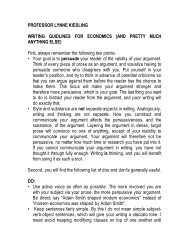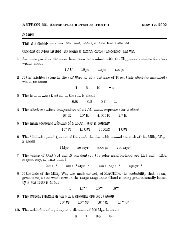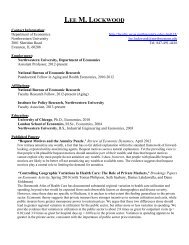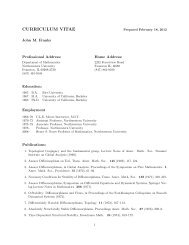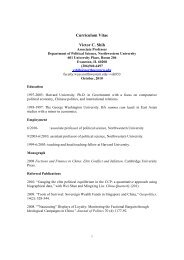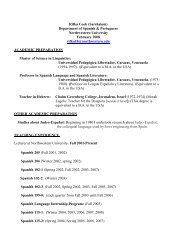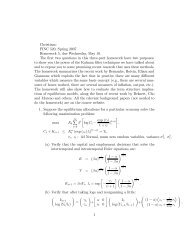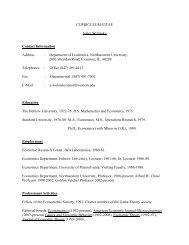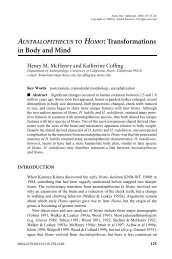DO PATENT POOLS ENCOURAGE INNOVATION? EVIDENCE ...
DO PATENT POOLS ENCOURAGE INNOVATION? EVIDENCE ...
DO PATENT POOLS ENCOURAGE INNOVATION? EVIDENCE ...
Create successful ePaper yourself
Turn your PDF publications into a flip-book with our unique Google optimized e-Paper software.
not include any patents that were included in a pool:<br />
(1) Patents ct = + 1 Pool t * Pool Patents c<br />
+ t * Pool Subclass c + t 2 * Pool Subclass c + f c + t + ct<br />
where pool patents ct counts patent applications in subclass c and year t; pool t<br />
equals 1 for period after the pool forms. 14 The variable pool subclass c equals 1 for<br />
subclasses that include one or more pool patents. Subclasses without pool patents<br />
in the same main class form the control. For example, pool subclass c equals 1 for<br />
the Philips screw pool subclass 411/403; other subclasses in main class 411 form<br />
the control.<br />
Under the identifying assumption that – in the absence of a pool – changes<br />
in the number of patents per year would be comparable in subclasses with pool<br />
patents and other subclasses in the same main class, the coefficient for the<br />
difference-in-differences estimator pool t *pool patents c measures the causal effect<br />
of the pool. Interaction terms t * pool subclass c and t 2 * pool subclass c control for<br />
separate linear and quadratic trends for subclasses with pool patents. f c are<br />
subclass fixed-effects and t are filing year fixed effects to control for variation in<br />
the intensity of patenting across technologies and over time. 15<br />
OLS estimates indicate that subclasses with one additional pool patent<br />
produce 0.45 fewer patents per year after the creation of a pool (significant at 1<br />
14 For five pools, the pool years include a small number of years after the pool had been dissolved.<br />
We include these years as pool years to estimate the pool effects in the most conservative ways<br />
(creating a bias towards zero. The pools are for fuel injection, pharmaceuticals, railroad springs,<br />
lecithin, and aircraft instruments.<br />
15 For example, some subclasses may include a disproportionate number of patents because they<br />
are especially hot areas of research activity, or inventors may be more likely to patent innovations<br />
in a specific subclass, if alternative mechanisms are ineffective (Moser, 2012). The number of<br />
patents in pool subclasses ranges from 1 to 57; the average per pool subclass is 3.0.<br />
14



